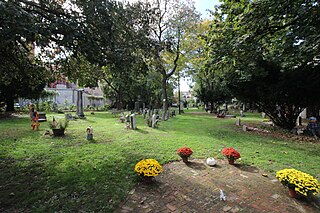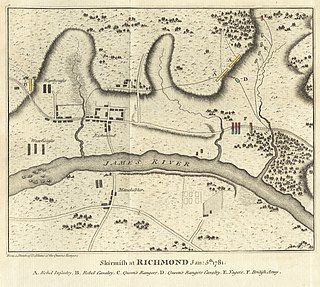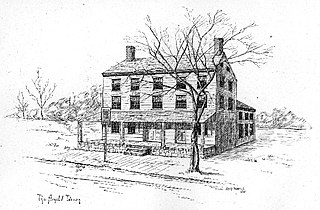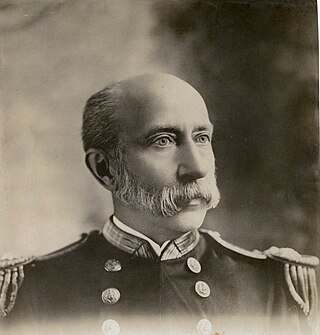
Richard Varick was an American lawyer, military officer, and politician who has been referred to as "The Forgotten Founding Father." A major figure in the development of post-Independence New York City and the state of New York, Varick became the 45th Mayor of New York City in 1789 and served eleven consecutive one-year terms until 1801.

Margaret "Peggy" Shippen was the highest-paid spy in the American Revolution, and was the second wife of General Benedict Arnold.

Evacuation Day on November 25 marks the day in 1783 when the British Army departed from New York City on Manhattan Island, after the end of the American Revolutionary War. In their wake, General George Washington triumphantly led the Continental Army from his headquarters north of the city across the Harlem River, and south through Manhattan to the Battery at its southern tip.

Samuel Fraunces was an American restaurateur and the owner/operator of Fraunces Tavern in New York City. During the Revolutionary War, he provided for prisoners held during the seven-year British occupation of New York City (1776-1783), and claimed to have been a spy for the American side. At the end of the war, it was at Fraunces Tavern that General George Washington said farewell to his officers. Fraunces later served as steward of Washington's presidential household in New York City (1789–1790) and Philadelphia (1791–1794).

New Bridge was a prosperous mill hamlet, centered upon a bridge strategically placed at the narrows of the Hackensack River. In the American Revolution, New Bridge Landing was the site of a strategic bridge crossing the Hackensack River, where General George Washington led his troops in retreat from British forces November 20, 1776. Eleven engagements took place here throughout the war. The current Draw Bridge at New Bridge was installed in 1889 and added to the National Register of Historic Places on July 5, 1989. The area is now a New Jersey historic site in portions of New Milford, River Edge, Hackensack and Teaneck in Bergen County, New Jersey.
Thomas Hickey was a Continental Army soldier in the American Revolutionary War, and the first person to be executed by the Continental Army for "mutiny, sedition, and treachery".

The DeWint House, in Tappan, New York, is one of the oldest surviving structures in Rockland County and is an outstanding example of Hudson Valley Dutch Colonial architecture. It was built using brick and indigenous stone in 1700 by Daniel DeClark, a Hollander, who emigrated to America in 1676 and bought the land from the native inhabitants in 1682. The date of construction is marked by glazed bricks incorporated into the façade.

Bergen Square, at the intersection of Bergen Avenue and Academy Street in Jersey City, is in the southwestern part of the much larger Journal Square district. A commercial residential area, it contains an eclectic array of architectural styles including 19th-century row houses, Art Deco retail and office buildings, and is the site of the longest continually-used school site in the United States. Nearby are the Van Wagenen House and Old Bergen Church, two structures from the colonial period. St. George & St. Shenouda Coptic Orthodox Church founded by early Egyptian immigrants was one of the original Coptic congregations in New Jersey.

The Van Wagenen House, also known as Apple Tree House, is located near Bergen Square in Jersey City, Hudson County, New Jersey, United States. The house was added to the National Register of Historic Places on August 16, 2006.

The Old Bergen Church is a historic church congregation in Jersey City, Hudson County, New Jersey, United States. Established in 1660 in what was then the Dutch colony of New Netherland, it is the oldest continuous religious congregation in what is today the State of New Jersey. The congregation is jointly affiliated with the Reformed Church in America and the Presbyterian Church (USA). The church was added to the National Register of Historic Places on August 14, 1973. The original church building was constructed in 1680 and the current edifice was built in 1841.

Old Bergen's Speer Cemetery is located at 145 Vroom St in the Bergen Square neighborhood of Jersey City, New Jersey, between Bergen Ave. and Van Reypen St.

Bulls Ferry is an area along the Hudson River, just north of Weehawken Port Imperial in the towns of West New York, Guttenberg and North Bergen in New Jersey. It takes its name from a pre-Revolutionary settlement belonging to the Bull family, who operated a row-and-sail ferry to the burgeoning city of New York across the river.
Events from the year 1783 in the United States. The American Revolution officially ended with the Treaty of Paris.

The Dey Mansion, located in modern-day Wayne, Passaic County, New Jersey, United States, and originally known as Bloomsburg Manor, played an integral role in the American Revolutionary War. Built by Col. Theunis Dey in the 1770s, it served as Washington's Headquarters on several occasions. Today, the Dey Mansion is currently open year-round with guided public tours Wednesday through Sunday.

The Three Pigeons was a prominent and famous meeting place in Bergen Township, New Jersey, during the revolutionary period, and was used historically as a landmark as well as a popular place for hosting special occasions.

The Battle of Bull's Ferry on 20 and 21 July 1780 saw two American brigades under Brigadier General Anthony Wayne attack a party of Loyalist Americans led by Thomas Ward. The Loyalists successfully defended a blockhouse against an ineffective bombardment by four American artillery pieces and a failed attempt to storm the position by Wayne's infantry. During the action, American light dragoons under Major Light Horse Harry Lee drove off a large number of cattle that were kept in the area for the use of the British army in New York City. The clash inspired British Major John André to write a satirical ballad entitled The Cow Chace. The skirmish was fought at Bulls Ferry, New Jersey in the Northern theater of the American Revolutionary War after Saratoga. At this stage of the conflict only raids and minor actions occurred in the north.

The Raid onRichmond was a series of British military actions against the capital of Virginia, Richmond, and the surrounding area, during the American Revolutionary War. Led by American defector Benedict Arnold, the Richmond Campaign is considered one of his greatest successes while serving under the British Army. It shocked patriot leaders and is considered one of his most notorious actions by modern Americans.

Jacob Arnold's Tavern, also known as the OldArnold Tavern and the Duncan House, was a "famous" historic tavern established by Samuel Arnold circa 1740. Until 1886, it was located in Morristown Green in Morristown, New Jersey. In 1777 it served as George Washington's headquarters during the Revolutionary War, and it was the site of Benedict Arnold's first trial in 1780. The National Park Service claims "Much of [Morris]town's social, political, and business life was conducted at Arnold's Tavern" during the Revolutionary era.

RADM William Knickerbocker Van Reypen (1840-1924) was the sixteenth Chief of the Bureau of Medicine and Surgery (BUMED) and the twelfth Surgeon General of the U. S. Navy, serving from 1897 to 1902.


















